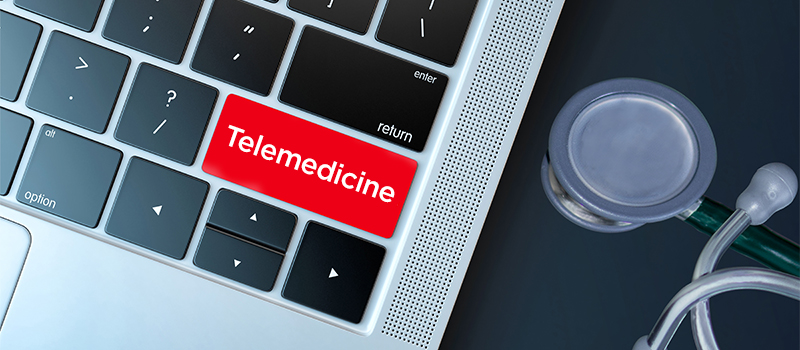
How to Become a Top Pediatrician After MBBS
Pediatricians are medical practitioners that specialise in treating children. Children experience fast physical and mental changes as they grow. Compared to adults, they undergo completely distinct physiological changes. A pediatrician is primarily responsible for managing the physical, mental, and emotional well-being of children at all stages of their development in addition to providing healthcare for children who are acutely or chronically unwell. For healthy youngsters, they also offer preventive healthcare treatments. They have a specific responsibility to transform medically and psychologically challenged kids into typical, healthy kids.
ADMISSION PROCEDURE
The following steps are undertaken by students who aspire to become Pediatricians:
- From the beginning, aspirants must complete the senior secondary education with the PCB stream with at least 50% marks.
- Further, they should crack the NEET UG exam to get admission to medical college (Government/ Private).
- After obtaining an MBBS degree, they need to appear for the NEET- PG entrance examination.
- A good score in NEET-PG gives a push to admission to the medical college for the Pediatrics PG course.
- Aspirants must complete a junior resident responsibility to gain a post-graduation degree.
- After the successful completion, they must obtain a license and become board certified.
ELIGIBILITY FOR BECOMING A PEDIATRICIAN
- Candidates should have completed an MBBS degree from a college/institution recognized by the Medical Council of India (MCI) with a minimum of 55% marks.
- They must have undergone the one-year compulsory internship after completing the course.
- Candidates must clear the NEET PG exam to be eligible for admission to recognized universities/colleges.
- For the general category, the candidate must obtain at least 50th percentile marks in NEET PG for admission to MD/MS courses. For SC, ST, and OBC, the minimum percentage requirement is the 40th
- For the candidate with benchmark disability specified under the Rights of Persons with Disability Act 2016, for the GEN-EWS and unreserved category 45th percentile is required. For, SC/ST/OBC-NCL candidates, the minimum marks shall be 40th
- In some cases, admission to post-graduate medical courses may also include a group discussion/personal interview after the entrance examination depending on the college.
- Final confirmation of admission depends on the cut-off marks and the counseling procedure.
In India, students must complete a five-and-a-half-year undergraduate programme that includes an internship to be eligible to write the entrance exam for NEET PG and pursue postgraduation in Pediatrics. This is the minimal academic requirement for becoming a doctor. In their various colleges or universities, students are required to have an MBBS degree and complete an internship.
Students who hold degrees from other nations but want to practise pediatrics in India must take the MCI exams. Students from the United States, the United Kingdom, Australia, New Zealand, and Canada are excused from taking the Medical Council Examination, but students from other nations must pass the MCI Exam to practise pediatrics in India.
In PG programmes, learning should be mostly self-directed and based on academic and clinical work. The official sessions are just intended to support this central effort. Check out the following ways to study effectively during post-graduation:
- Attend seminars or interdepartmental cases, participate in recognized scientific events (CME, symposia, and conferences), and attend webinars by eminent teachers like Prof. Piyush Gupta.
- Focus on practice-related resuscitation, basic sciences, biostatistics, research methodology, teaching style, hospital waste management, health economics, and medical ethics.
- To brush up on their knowledge of undergraduate studies, postgraduate students are required to participate in the training and instruction of interns and undergraduate students.
- During their training period, postgraduate students should keep a log book detailing the duration of their assignments and work in pediatric wards, outpatient clinics, and casualties. This should include the procedures and classes they took. They can use this to periodically assess the experience they have obtained and keep track of training-related activities.
- During their rotation, students are required to visit all of the department’s clinical facilities, including neonatology, perinatology, critical care, and emergency.
- Videos of evidence-based courses and benchmark clinical trials should be watched by students. These are easily accessible through Prof. Piyush Gupta’s renowned “PG Textbook of Pediatrics” and the DigiNerve Pediatrics MD Course.
Watch the Orientation to Post-graduation in Pediatrics to know more
DigiNerve’s Pediatrics MD Course by Prof. Piyush Gupta
To become a top pediatrician, Pediatrics MD is the most popular course for PG students. It is designed by the Chief Editor- Prof. Piyush Gupta, renowned for his best-selling “PG Textbook of Pediatrics”. This online pediatrics course is unique in its field, thanks to more than 500 years of experience and knowledge from India’s top 100 faculty. The course encourages concept-based and approach-based learning to suit all of the learning needs of the students while they pursue their master’s in pediatrics. The principles are supported by studies that serve as benchmarks or sources of proof. With an emphasis on the clinical findings and a detailed workup on how to arrive at an accurate diagnosis, the cases have been thoroughly examined.
This Pediatrics MD Course is among the best PG Pediatrics online course since the most recent society guidelines have been incorporated into each unit. The PG curriculum places a lot of emphasis on research, so a whole module has been allocated to giving students step-by-step guidance on how to do research. An interactive drug formulary has been included in the course for students’ convenience while they complete their ward rounds. The course incorporates engagement exercises including Journal Club, frequent Chat Shows, and current events.
Check out this Chat Show on ‘Pediatric Intensive & Critical Care’ by Prof. Piyush Gupta & Dr. Vikram Bhaskar
Careers you can pursue after PG in Pediatrics:
In order to treat a wide range of pediatric diseases and health issues, pediatricians are required to work in several settings, such as general pediatric institutions and long-term community care for children and adolescents. After postgraduation, one can choose from the following career paths:
- Gastroenterology Pediatricians: They recognise and treat serious conditions such as pancreatic insufficiency, gastrointestinal haemorrhage, inflammatory bowel disease, lactose intolerance, liver illness, vomiting, and others.
- Neonatologists: Doctors having specialised expertise in treating newborns and young children with complex, high-risk health issues.
- Pediatric Intensivists: They have significant training in detecting and treating children with life-threatening illnesses and specialise in critical care.
- Cardiologists: They specialise in the treatment of congenital cardiac disease and abnormal heart rhythms in children.
- Pediatric Endocrinologists: They identify and treat hormonal disorders in children, such as thyroid disorders, developmental problems, early or delayed puberty, and others.
- Neonatal Pediatricians: Neonatal pediatricians are particularly proficient at caring for infants who are born prematurely or with serious injuries, diseases, or birth defects, even though all pediatricians are trained to treat newborns who have just been born. They can also spot problems with the baby while it is still in the womb, which allows them to seek care from an obstetrician.
- Pediatric Hematologists and Oncologists: Leukemia, lymphomas, brain tumours, bone tumours, and solid tumours are all conditions they treat in children.
- Child Nephrologists: Kidney, bladder, and urinary tract problems in children are all treated there. They are also found to have congenital and acquired renal problems.
- Pediatric Anesthesiologists: They assure the safety of a child undergoing surgery for a condition that calls for it.
- Pediatric Allergists: They identify allergic reactions to food, air, or water that could result in asthma, a rash, or life-threatening anaphylaxis.
- Pediatric Developmentalists: They assess, advise, and treat young children and adolescents for physical deformities such as muscular dystrophy, behavioural problems like Attention Deficit Hypersensitivity Disorder (ADHD), and other developmental and behavioural problems.
- Pediatric Urologists: They treat urinary tract infections, disorders of urination like urinary retention, urinary incontinence, and others.
- Pediatric Dermatologists: They diagnose, manage, and treat skin diseases in children.
FAQs:
Q1. How many years does it take to become a Pediatrician?
Ans. A basic medical degree that lasts five and a half years and a three-year postgraduate degree is required in India to become a pediatrician, which adds up to eight and a half years of education.
Q2. Does a Pediatrician perform surgery?
Ans. It is a pediatrician’s duty to identify and treat common ailments in children. Treatment for conditions like diabetes, asthma, ear infections, strep throat, and pneumonia are included. Along with providing medical care, they also perform surgery and provide prescriptions for drugs.
Q3. What are the skills that a pediatrician requires?
Ans. Problem-solving, empathy, teamwork, communication skills, ability to relate to children, analysing laboratory results, and awareness of different cultures and traditions.
Related post










